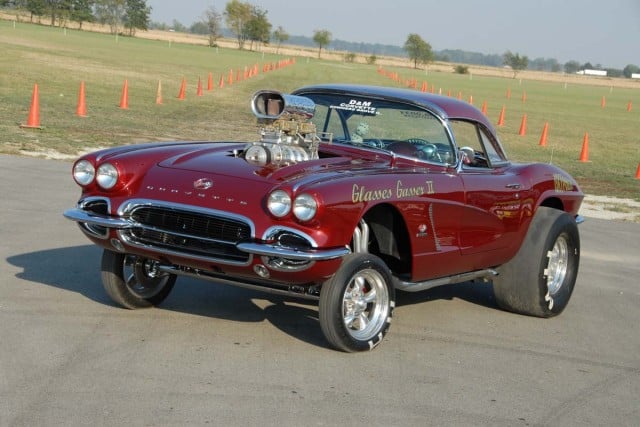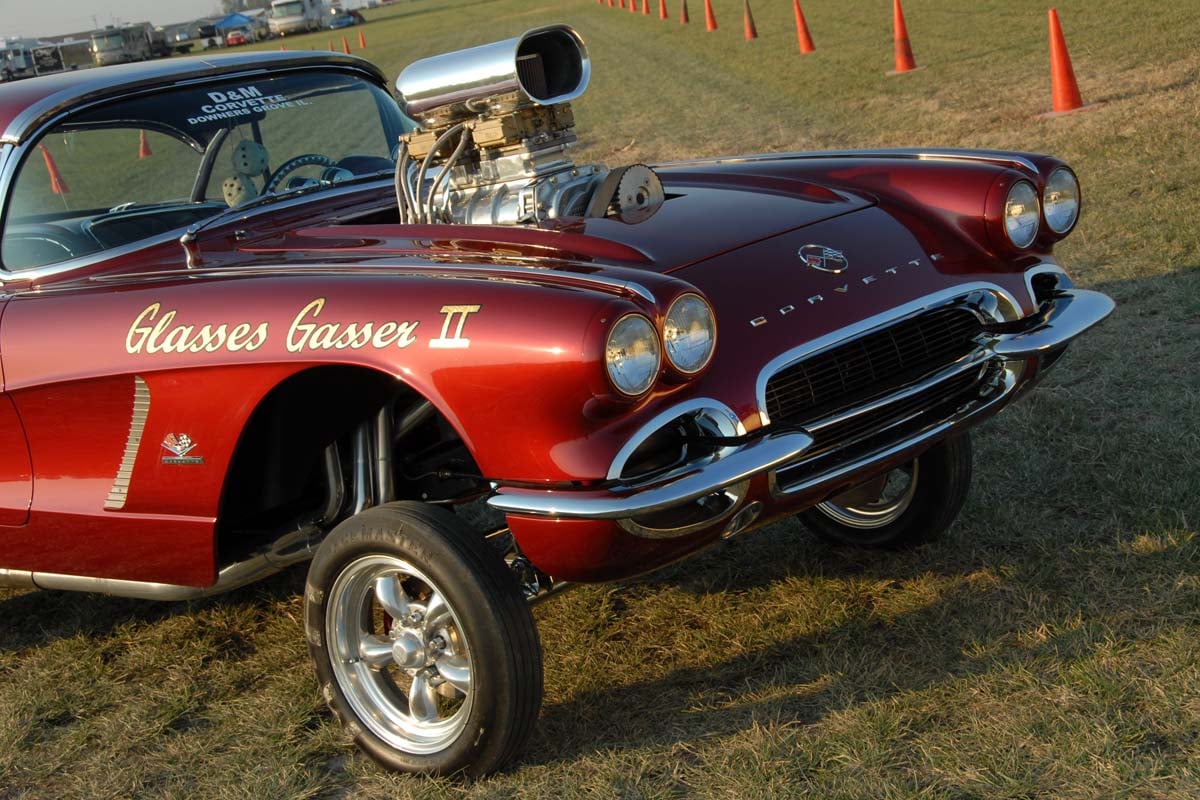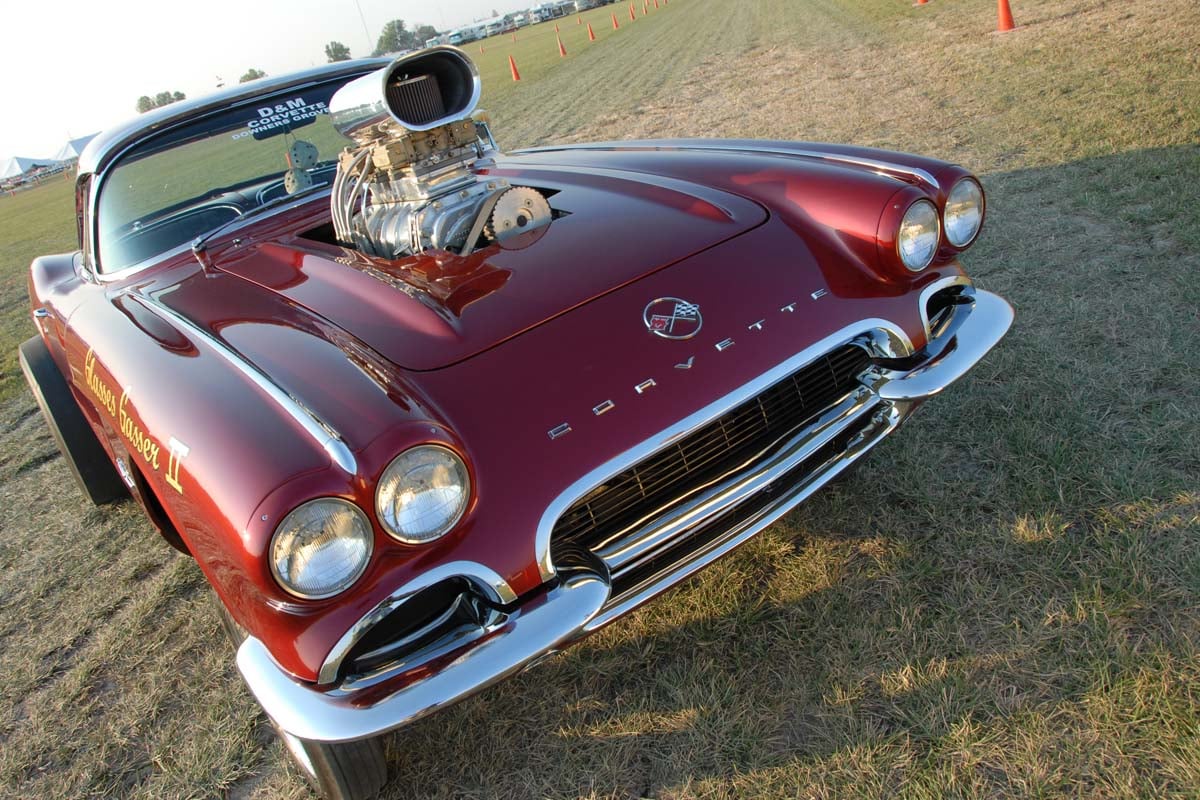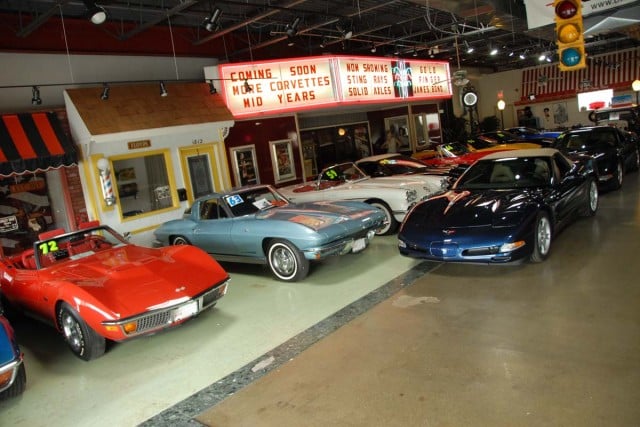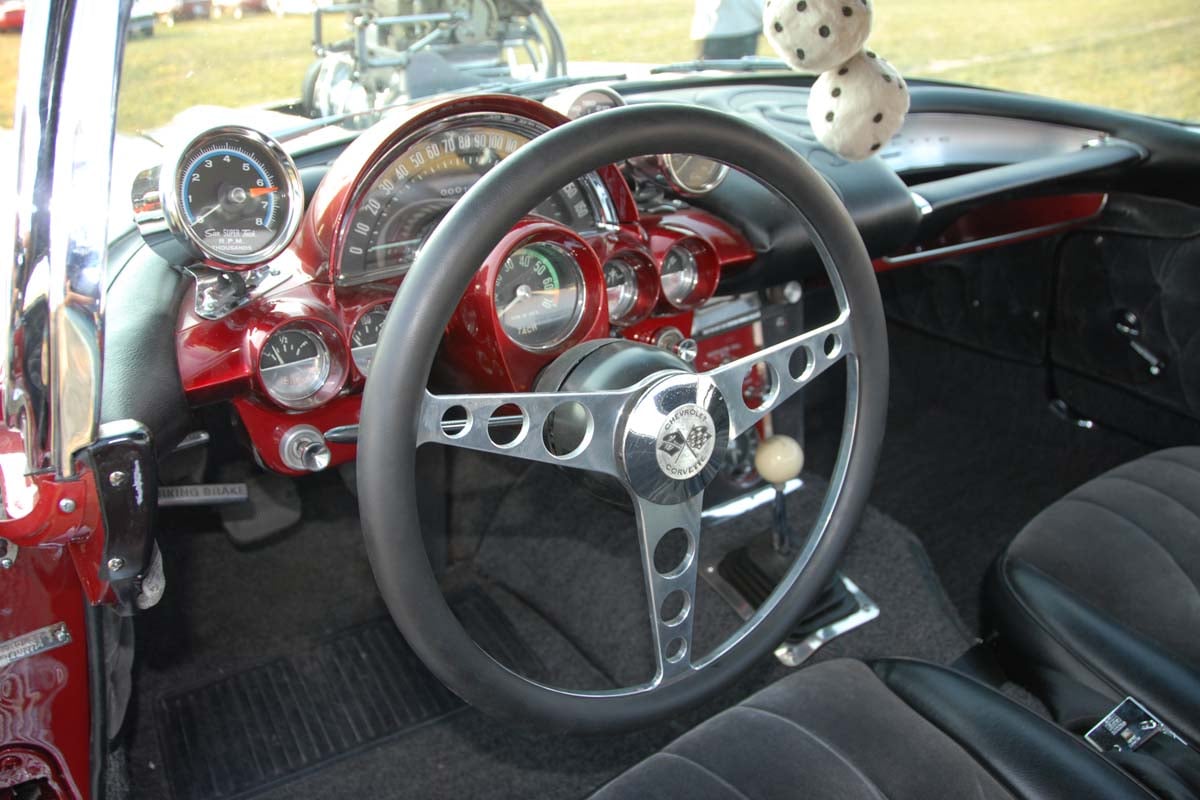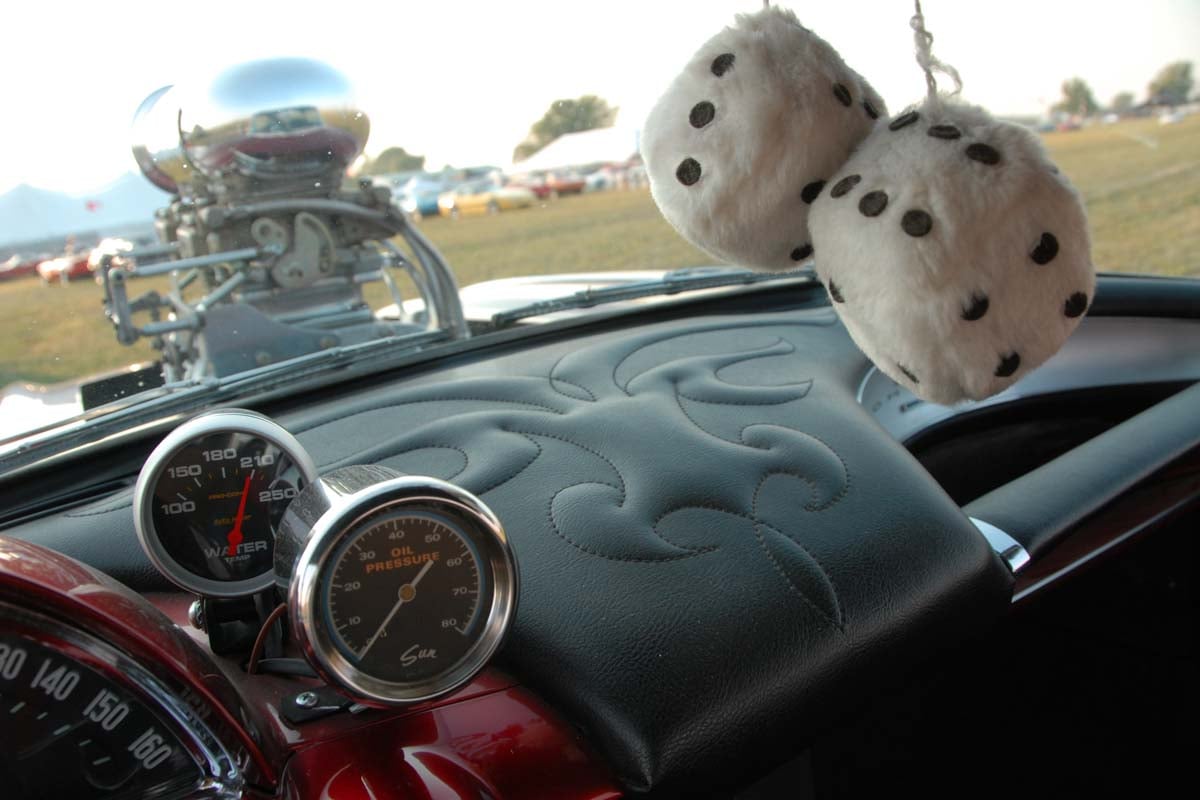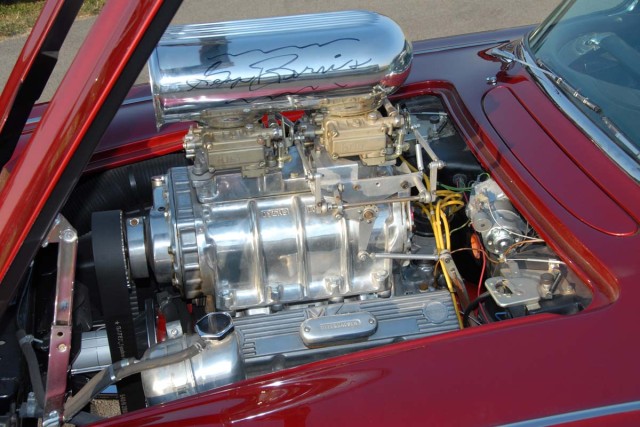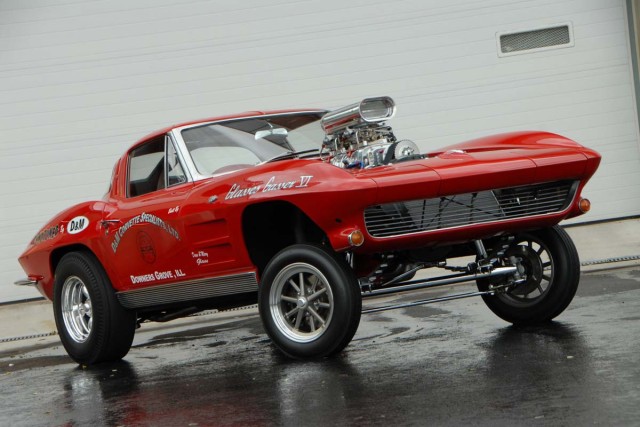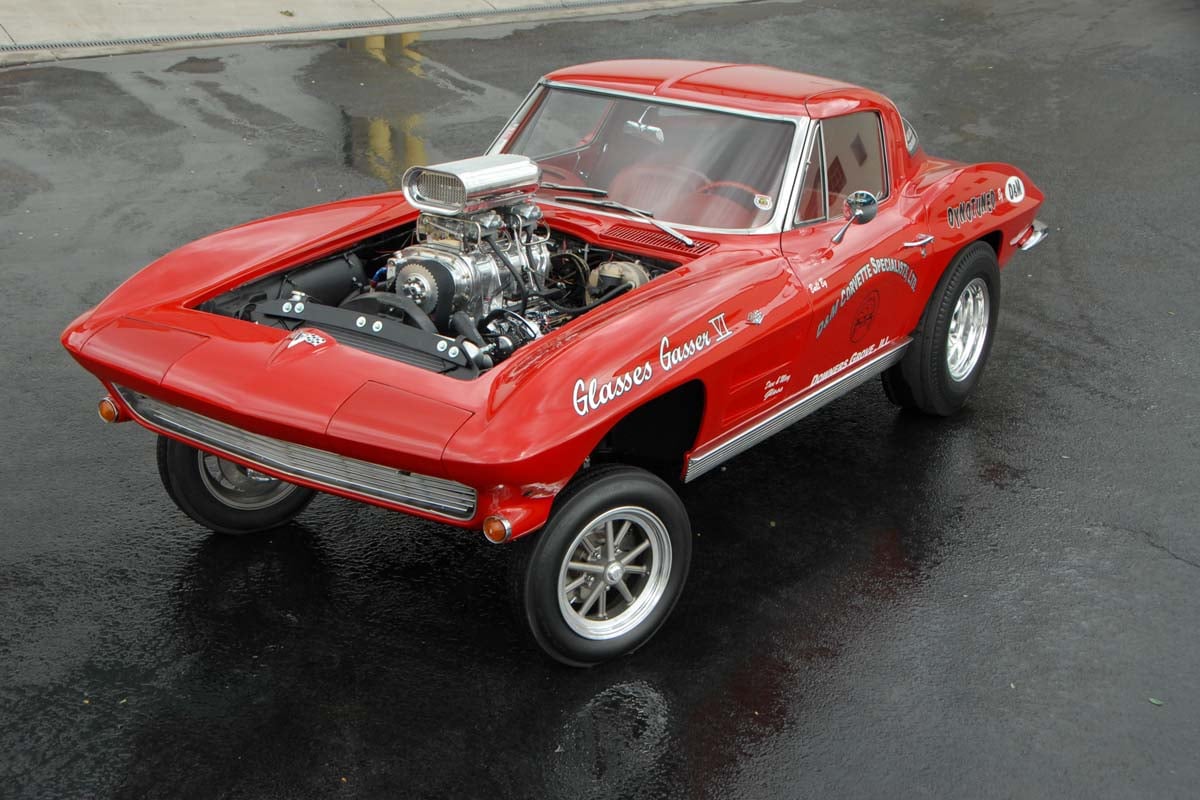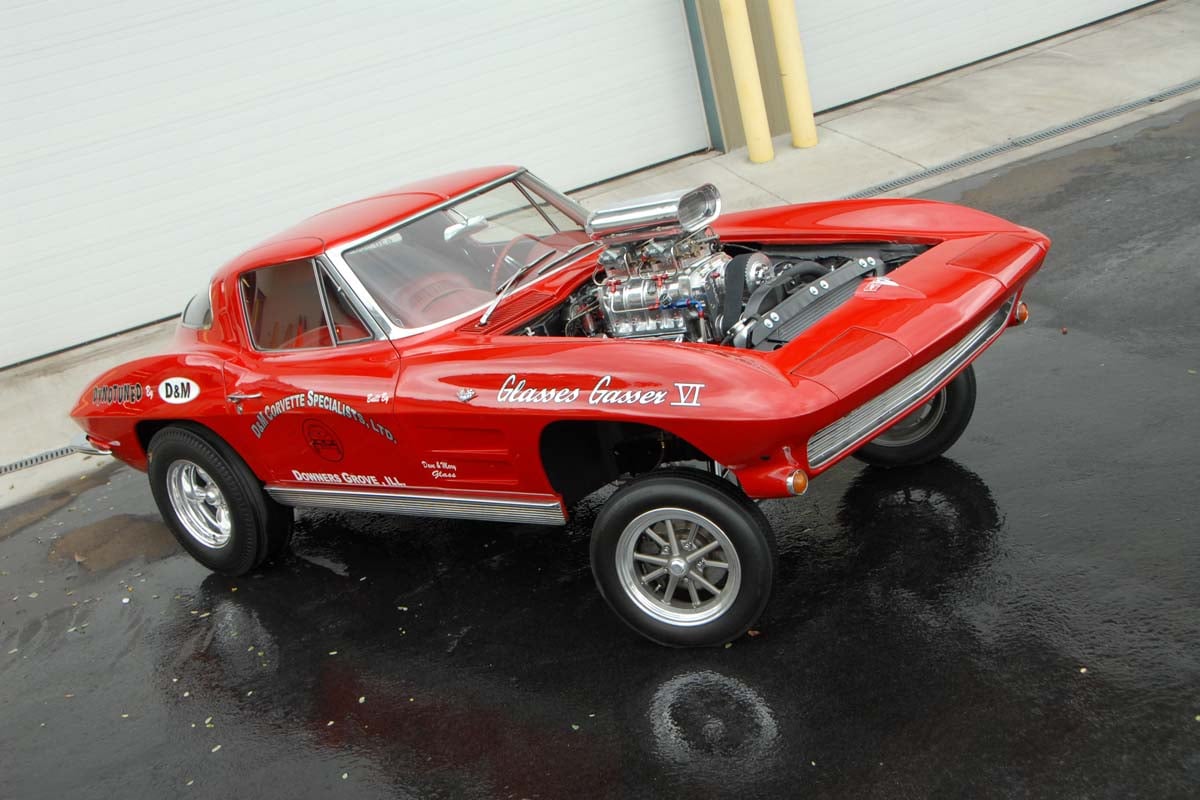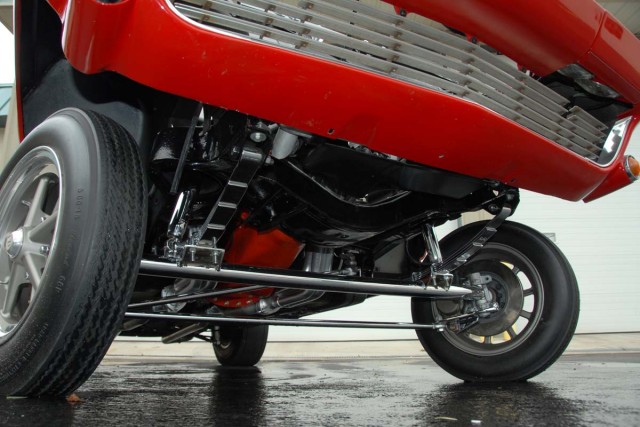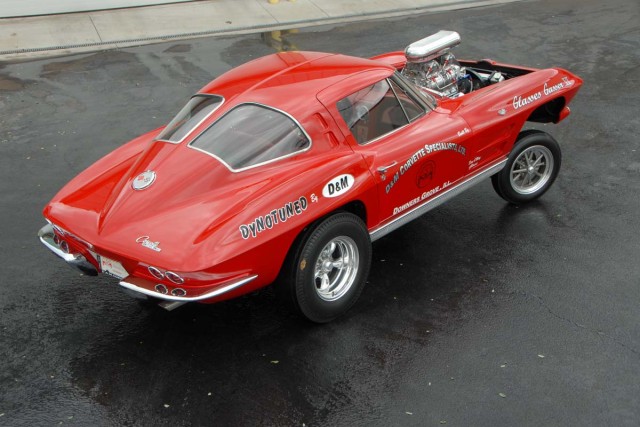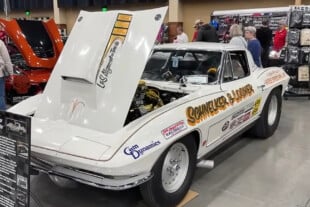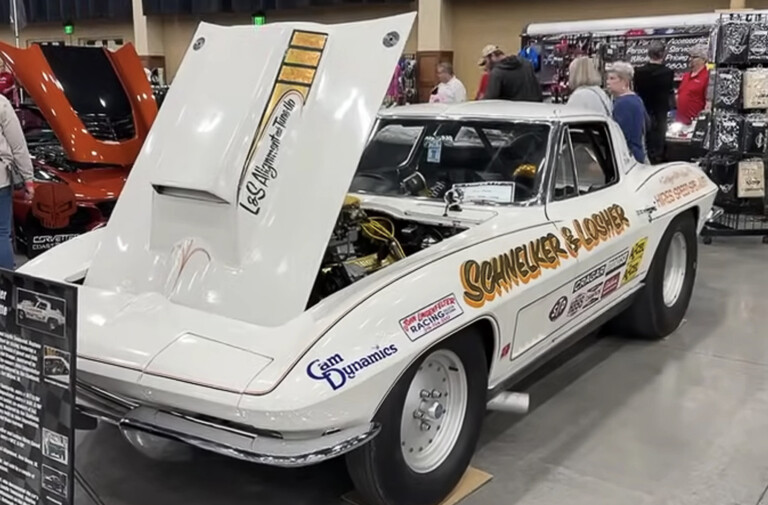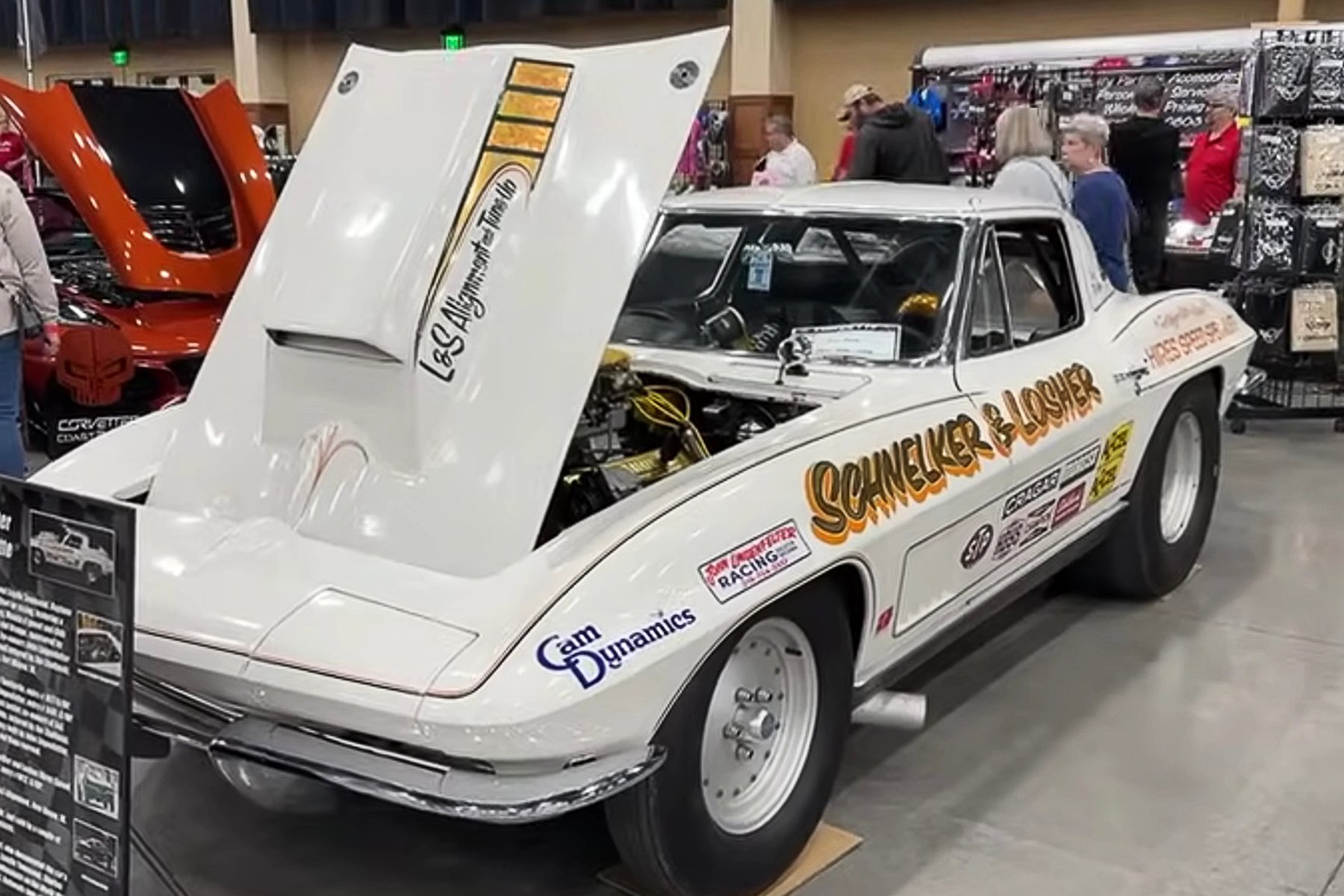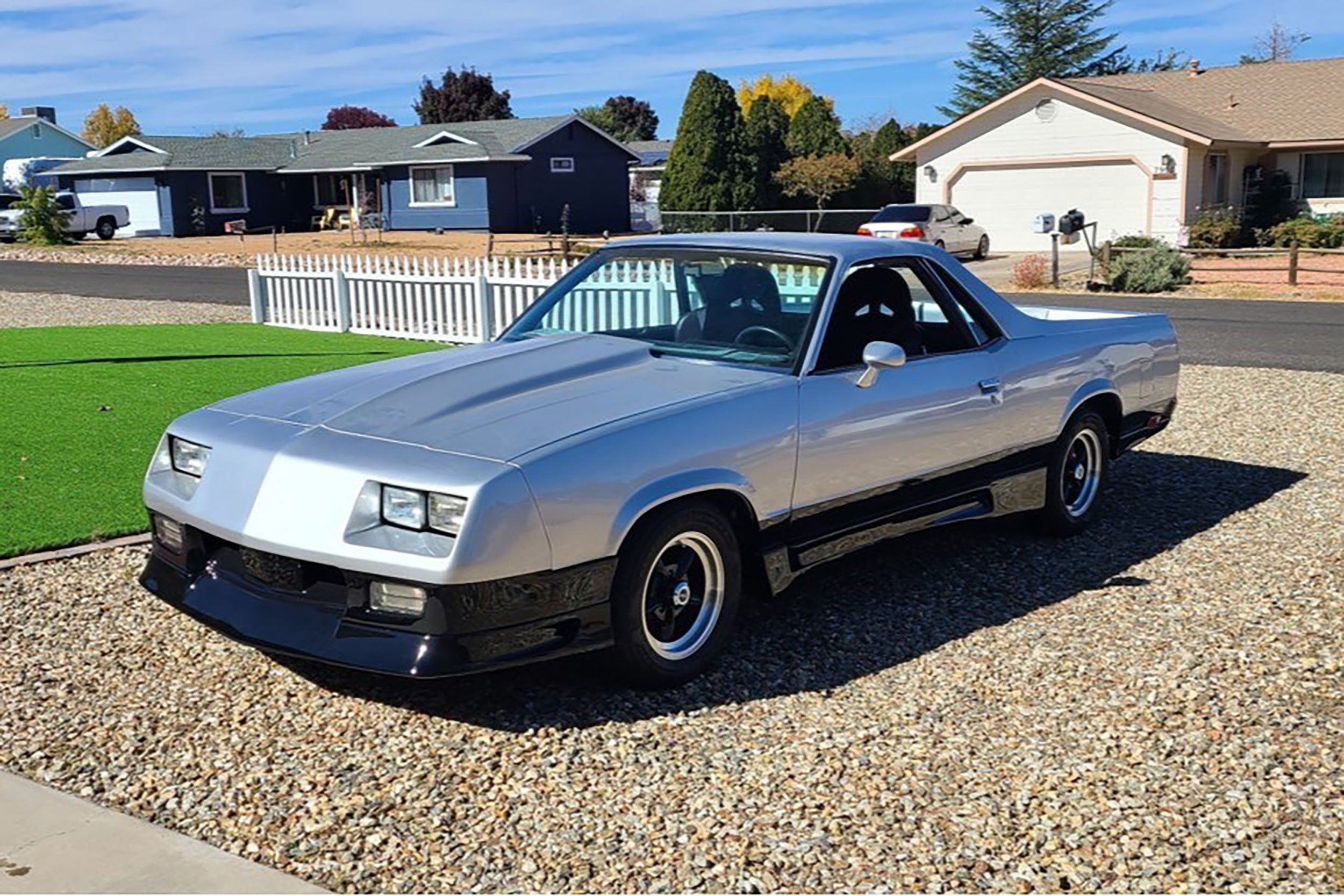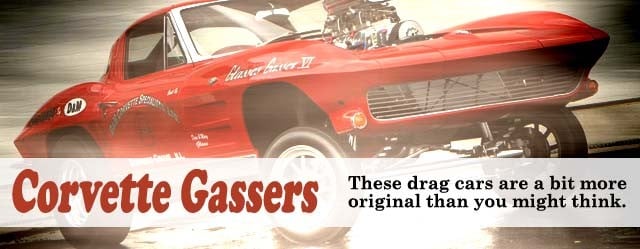 Back in the 1960s, Corvettes duked it out with Shelby Cobras on road courses across the country. But, there was another battle raging on American asphalt. Supercharged gassers—wild, nearly uncontrollable machines with short wheelbases and ungainly body styles—that dominated the drag strip. They were a challenge to drive and fun to watch—from a safe distance. Early versions ran Oldsmobile or Cadillac power, but as the years progressed, blown Chevy V8s and Chrysler Hemis were the engines of choice.
Back in the 1960s, Corvettes duked it out with Shelby Cobras on road courses across the country. But, there was another battle raging on American asphalt. Supercharged gassers—wild, nearly uncontrollable machines with short wheelbases and ungainly body styles—that dominated the drag strip. They were a challenge to drive and fun to watch—from a safe distance. Early versions ran Oldsmobile or Cadillac power, but as the years progressed, blown Chevy V8s and Chrysler Hemis were the engines of choice.
As for body styles, the most popular were Willys, both the ‘33 and the ‘40 coupe, plus ’50s Chevys, since they were readily available and expendable. Corvettes? Not so much, because they were typically too pricey for this offbeat form of drag racing.
Converting a Corvette into a gasser takes a special sort of person, someone who understands the importance of caring for a collectible and has an appreciation for a significant period of automotive history. Dave Glass and his wife, Mary Glass, fit the bill. In addition to restoring and modifying Corvettes since 1984 at their shop, D&M Corvette Specialists, they share another automotive passion that dates back to the early days of their marriage.
“We watched all the gassers race at the Nationals in Indianapolis in the 1960s,” Dave explains. “We are John Mazmanian gasser fans, so in our collection we built a cloned 1940 Willys Coupe with a Blown 392 Hemi.” Given the challenge of handling these racers, drivers like Big John Mazmanian, Stone, Woods & Cook, and K.S. Pittman are nearly as famous as when they campaigned in the Gasser Wars.
About 15 years ago D&M diversified a bit, and started building gassers, ’32 Fords, and musclecars. So, in addition to the Willys noted above, D&M decided to “gassify” both a ’62 Corvette and a ’63 split window. Purists will no doubt question the wisdom of tinkering with a collectible Corvette, but Dave has the street cred to do something different. After all, he’s been a Bloomington Gold judge for more than 12 years, and has won numerous Bloomington Gold Awards and NCRS Top Flights.
Not only that, in 1992, GM hired him to restore a ’53 Corvette to commemorate the millionth Corvette at his shop. Another noteworthy car he restored (twice) is the ’67 L89 Corvette that was personally spec’d out by Ed Cole, the former head engineer for the Chevy V8, and general manager of Chevrolet (and later on president of GM). Glass has a number of other collectible Corvettes on display at his 35,000-foot facility as well, which employs a staff of 17, most of whom have worked there for dozens of years.
One in particular that is especially rare is the Rick Mears Special Edition C4, an aftermarket conversion crafted by designer Larry Shinoda, known for designing the ’63 split window Sting Ray (note that while he and Zora Arkus-Duntov were kindred spirits when it came to the Sting Ray concept, they locked horns over that singular split window design element, Duntov preferred a more open and practical, single-piece rear window with better visibility).
Near the end of his illustrious design career, Shinoda had always wanted to give the C4 some “sex appeal,” as he put it. He designed the body package in 1989, and after racer Rick Mears agreed to add his name to the project, it debuted in 1990. Initial response to the body treatment was very positive, as it gave the C4’s chunky, clipped shape much more tapered lines and a whole new level of sleekness, in both a visual and functional sense. Not only did it create a more stylish Corvette, but also provided an improved drag coefficient, lowering it from .34 to .30. Sadly, only a few dozen were ever built, likely due to its high price and difficulty of installation, especially on the convertible.
How does Dave feel about owning this significant piece of Corvette history? “I don’t care if I sell it,” he says. “I’ve seen some body kits over the years that really screw up the lines of a Corvette. But, an experienced Corvette owner—a true Corvette guy— really loves Shinoda’s design.”
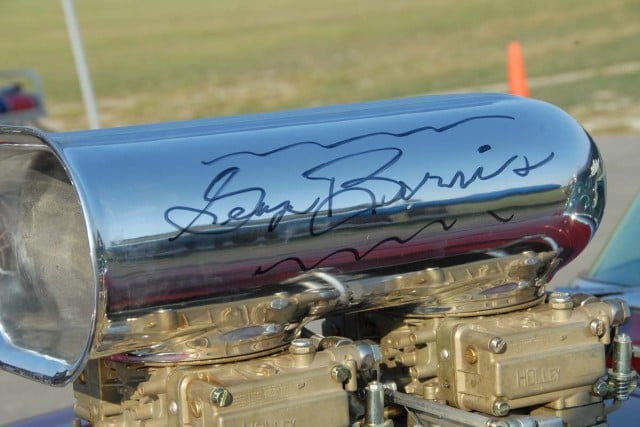 When Dave decided to modify a classic Corvette into a gasser, he knew the importance of not ruining the car, and making sure it would be possible to bring it back to original if needed.
When Dave decided to modify a classic Corvette into a gasser, he knew the importance of not ruining the car, and making sure it would be possible to bring it back to original if needed.
Why attempt this type of project? “These gassers really make people smile,” he laughs, recalling his experiences at Bloomington Gold events. “Most folks will take a quick look at a 100-point, frame-off Corvette restoration and then keep on walking. But the gassers make them stop and stare.”
Indeed, we had this exact same reaction when we first came across Dave’s ’62 at a gathering of thousands of Corvettes at Mid America’s Annual Funfest. It was the one car that really made us linger in awe.
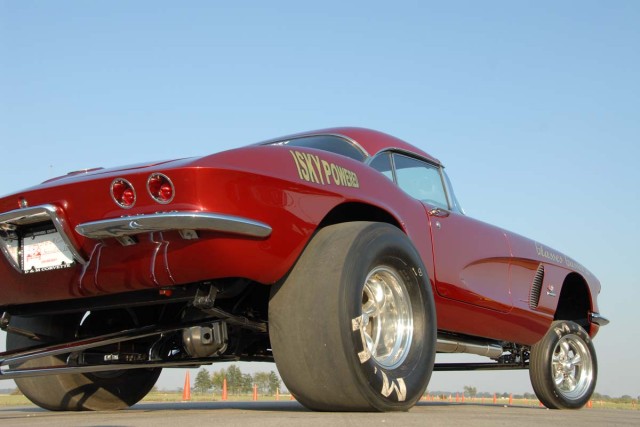 Glass admits that the inspiration for their Corvette gassers didn’t come on its own, but from a fellow enthusiast. While attending a Turkey Rod Run in Daytona, Florida in 2002, Dave and Mary spotted a ’60 Vette with a straight-axle setup for drag racing, and got real excited. “Everyone loved the car so we tried to buy it, but the owner wouldn’t sell,” Dave said. Undaunted, they decided to build their own version, using a ’62 Corvette in need of some serious attention.
Glass admits that the inspiration for their Corvette gassers didn’t come on its own, but from a fellow enthusiast. While attending a Turkey Rod Run in Daytona, Florida in 2002, Dave and Mary spotted a ’60 Vette with a straight-axle setup for drag racing, and got real excited. “Everyone loved the car so we tried to buy it, but the owner wouldn’t sell,” Dave said. Undaunted, they decided to build their own version, using a ’62 Corvette in need of some serious attention.
“We bought the car about 10 years ago. It was sitting in a garage, had not been running for some time, and needed a total restoration,” Dave recalls. It had been raced previously, had a 350 small-block Chevy (instead of the original 327), four-speed trans, and a Dana rearend with traction bars. But, the owner lost interest in the project and Dave took it off his hands, thinking he might bring it back to original spec.
After his seeing how people reacted to the ’60 straight-axle Vette in Florida, though, he decided to pull some parts off his ’33 Willys, which used to run in the 10s back in the early ’70s. To perform the transplant to his Corvette without carving it up, he built a removable subframe for the straight-axle front end.
In the meantime, Glass had his shop strip the paint down to bare fiberglass, which took a solid two weeks worth of sanding, rather than risking damage from the use of blasting or a chemical strip.
“All solid axle Corvettes are very time consuming, because of all the curves,” Dave points out. Since there was no trim code back then, he had no idea what the original color was, which allowed him up to choose the same maroon that Mazmanian used on his gasser (and which happened to be his favorite color anyway, since his first car, a ’67 Sting Ray, was Marlboro Maroon).
The ’33 Willys built by racer Gary Dyer of Mr. Norm fame also contributed its impressive powerplant. The engine is a 327 ci Chevy, bored 0.60 over, and outfitted with a Milodon four-bolt main, and Venolia 7.11:1 compression pistons. To handle the forced induction from the straight-up 6-71 GMC blower, the block has been O-ringed and fitted with studded, 202 fuelie heads, complete with a roller cam, and topped with dual Holley carburetors.
While the engine has the appearance of a full-on gasser mill, it starts right up without a hiccup, and emits a steady growl when Dave tools around town or on the show grounds. Even so, he admits that it’s a bit more gnarly to drive than his ’63 Corvette gasser, which we’ll get to shortly. No surprise, since the ’62 gasser’s driveline has a four-speed trans and 4.88:1 gears inside a Dana 60 rearend. The rubber came from the Willys as well, a set of M&H 31-inch meats on 13×15-inch American Racing wheels.
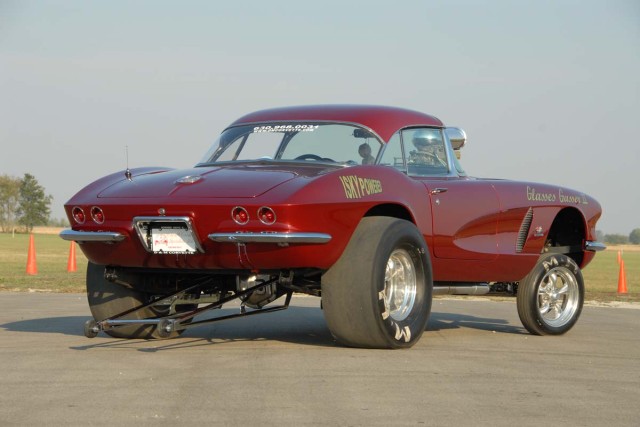
The car’s interior was customized by the original owner, and Dave added a hardtop he had on hand to protect it, giving it the period-correct look of Mazmanian’s gasser. All modifications aside, Dave never lost sight of the inherent value of an older Corvette. “One of the best things about the car is that it could be put back to original should someone want to do so.”
A Split-Window Gasser
Taking things a step further is Dave and Mary’s ’63 split-window gasser. Dave came across the car a couple years ago when its owner contacted him about possibly selling it for health reasons. “He brought it over to us, and I could tell by the look in his eyes that he felt as if he was saying goodbye to an old friend and wanted to make sure it went to a good home.”
After going through the car for a day or so, Dave asked him how much he wanted for it and the man agreed on a price. The car was originally black with red interior, a fairly rare combination, but it did not have the factory engine in it, and it had been customized with different wheels and lights within the grille. Given those alterations, Dave didn’t feel reluctant to tamper with a rare split-window Corvette. So, he set about cleaning it up cosmetically and started sourcing for the right parts.
First, Dave stripped off the front end, storing it in a safe place–again, in case he ever wanted or needed to take it back to original. He then replaced it with a lifted straight axle suspension with 27-inch springs from Speedway Motors. While his other Corvette gasser required building a subframe, this one didn’t. “You just have to make sure there is enough caster with the stock steering box,” Dave pointed out.
Next, Dave replaced the 300 hp engine with a 400 ci block pulled from his rusted-out snowplow pickup. (Briefly considered a big-block V8, but decided against it since that wasn’t available back in the day). In addition to topping it off with a pair of 600 cfm Holley blower carbs, he added an under-driven 6-71 Roots-type supercharger, also from famed racer Gary Dyer.
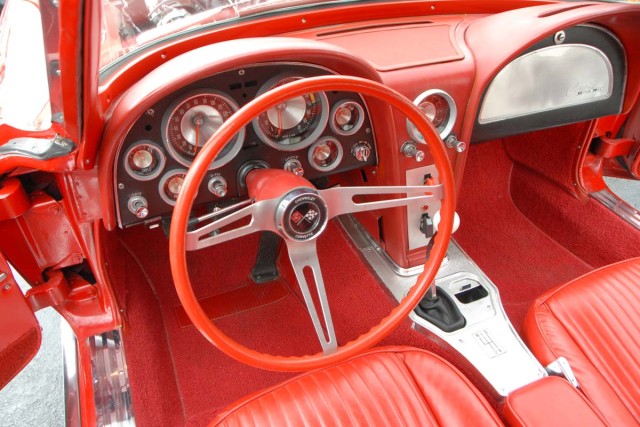 Explaining the more modest boost pressure, “This version is more user-friendly and streetable than the go-fast ’62,” Dave says. “I wanted the motor to live, not race, so I can cruise around town.” Even though it’s intended for street duty, he added a few comp-grade components, such as a Lakewood scatter shield and a block saver (1/8-inch steel plate between the block and the bellhousing.
Explaining the more modest boost pressure, “This version is more user-friendly and streetable than the go-fast ’62,” Dave says. “I wanted the motor to live, not race, so I can cruise around town.” Even though it’s intended for street duty, he added a few comp-grade components, such as a Lakewood scatter shield and a block saver (1/8-inch steel plate between the block and the bellhousing.
He also thought about adding fender-wall headers that exit in front of the cab, but didn’t want to cut up the body to do so. “I can’t get the purist out of my head,” Dave said. So, he went with a set of Hooker Headers instead, Jet-Hot coated.
The rearend has a comparatively modest ratio at 3.73:1, since it’s not seeing any hardcore track time. But, it has been lifted with air shocks to fit those fat Coker “pie-crust” slicks (so named for the pinched edges of the sidewalls). At the front are E-T gasser wheels wrapped with BF Goodrich Silvertown skinnies.
Once completed, this split-window gasser grabs knowing glances from a more mature crowd. You know, the type who wear shirts that read, “old guys rule.”
But what about those collectors of classic Corvettes, the ones who would prefer to see them preserved as a pristine, all-original car? That’s certainly feasible, but whether that will ever happen remains to be seen. In the meantime, Dave and Mary enjoy paying tribute in their own way to the era of the famed gassers.
“Everything is so high-tech now,” Dave notes. “People really appreciate Mary and I emulating a time when drag racing was drag racing.” What a gas!



